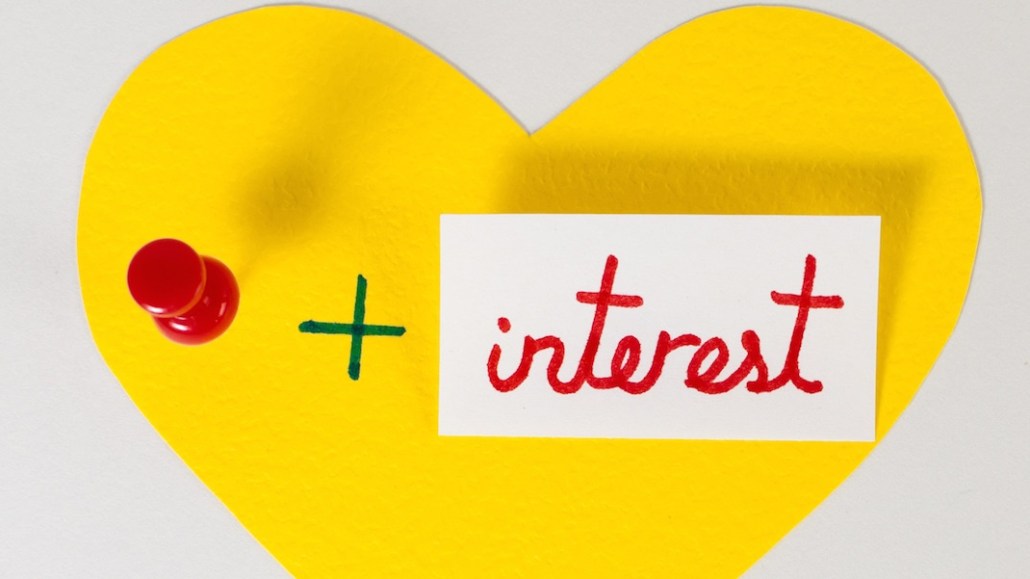Hear from execs at The New York Times, Thomson Reuters, Trusted Media Brands and many others

![]() This is the third story in the series “The Retailer of the Future,” which examines how retailers are innovating to meet the mounting expectations of the digital consumer. It is brought to you by Neustar, a real-time, cloud-based information and analytics provider.
This is the third story in the series “The Retailer of the Future,” which examines how retailers are innovating to meet the mounting expectations of the digital consumer. It is brought to you by Neustar, a real-time, cloud-based information and analytics provider.
The importance of Pinterest to retailers has become undeniable over the past year. More and more data comes out every day pointing to Pinterest as the social network driving the highest percentage of traffic and sales. And now with Pinterest’s fairly new Rich Pins feature, retailers could stand to get, well, even richer with the platform.
Rich pins are Pinterest pins that are enhanced with metadata, allowing publishers, brands and retailers to add extra information to images that people pin. Pinterest started piloting the new feature last spring, and only in October did Pinterest make the feature available for general use. There are currently five different kinds of rich pins: product pins, place pins, article pins, movie pins and recipe pins. But what matters most for retailers is the product pin.
Product pins enable retailers to attach real-time pricing, inventory availability and a “Buy this” link to their product images. This added data not only provides relevant information to the consumers who are pinning these products but also means a lot of new marketing opportunities for retailers and a strong way to directly connect pins back to the retailer’s site.
The key to rich product pins is the real-time pricing feature. For example, if you pinned a coffee table from Overstock.com, which uses rich pins, and a week later the price drops, you would get an email from Pinterest notifying you of the price change. The price-drop notification email comes from Pinterest, not the retailers, which is an incredibly valuable feature for retailers. This means that even if someone is not on a retailer’s email list, through rich pins, there is still a way for retailers do drive pinners back to their sites.
“Rich pins enable new kinds of marketing campaigns that we haven’t had before,” said Jason Goldberg, vp of strategy at Razorfish. “Usually, social is a fire-and-forget thing: If 1,000 people like us on Facebook, there isn’t a whole lot you can do with those 1,000 people; but now with rich pins and the notification emails, I can start doing clever things, like artificially changing the price for a product with the most rich pins.”
As Goldberg explained, by offering these kinds of targeted discount promotions through rich pins, retailers can “reinvigorate” pins of their products by lowering the price and triggering the price-drop email notification to those who have pinned the item. This brings the product and the retailer back into the attention of consumers.
“Pinterest is one of those tough nuts to crack, but having that email to send when the prices drop has been fantastic,” said an Overtock.com spokesperson. “It’s one of the few ways you can crack into the Pinterest code.”
Overstock.com configured its site for rich pins soon after they were released in October, and according to the online retailer’s co-president Stormy Simons, rich pins are indeed sending more traffic back to the site.
“We have seen an increase in visits from Pinterest, and January is usually a slower period for retail, so we are very encouraged by these early results,” said Simon.
Retailers are not just taking advantage of rich pins on Pinterest, but some are even integrating rich pins and pinning data back onto their sites, through a trending-products widget, which is another new e-commerce-friendly feature from Pinterest. Pinterest has made the trending-products widget tool possible through new APIs that enable retailers to use real-time Pinterest data to see which of their products is currently getting the most pins, which they can then use to inform the retail experience on their sites. For example, Target created an entirely new shopping experience around its trending Pinterest products called the Awesome Shop at awesomeshop.target.com.
“The Target Awesome Shop provides a curated shopping experience with Target products that are trending on Pinterest and that have top guest reviews on Target.com,” explained Katie Boylan, a Target spokesperson. “The new site is designed for discovery and inspiration, and we’re excited to see how our guests respond.”
Target clearly understood the value of Pinterest when creating the Awesome Shop after seeing results from using rich product pins. According to data Target shared with Fast Company, Target saw a 70 percent increase in visits to its site from Pinterest after creating rich pins for its products.
Still, although retailers like Target, Overstock, Zappos and Shopbop have gotten results using rich product pins, the adoption rate is under 50 percent for top retailers.
“Looking at the top 100 retailers in the IR 500, we’ve found that 30 percent have adopted rich pins. When looking at the top 50 retailers in that list, that number climbs to 42 percent,” said Apu Gupta, CEO of Curalate. “This speaks to Pinterest’s ability to make this relatively easy to integrate and also how rapidly Pinterest has become an important platform for retailers.”
Image via fotolia
More in Marketing

‘It’s the worst execution I’ve seen’: Confessions of a marketer on pulling every client off Google’s PMax
While most marketers still plough their ad dollars into Google’s AI-powered advertising tool, one marketer explains why that isn’t always the best idea.

CMO Strategies: How marketers are spending and measuring across social media in 2025 — from Meta to TikTok
The fifth installment of Digiday’s CMO Strategies series examines how marketers are spending and measuring across social media platforms in 2025 — from Meta to TikTok.

At Carbone Fine Food, tariffs are putting pressure on its ‘most important ingredient’
The CPG company could face additional long-term costs on its ‘most important ingredient’: tomatoes from the San Marzano region of Italy.





